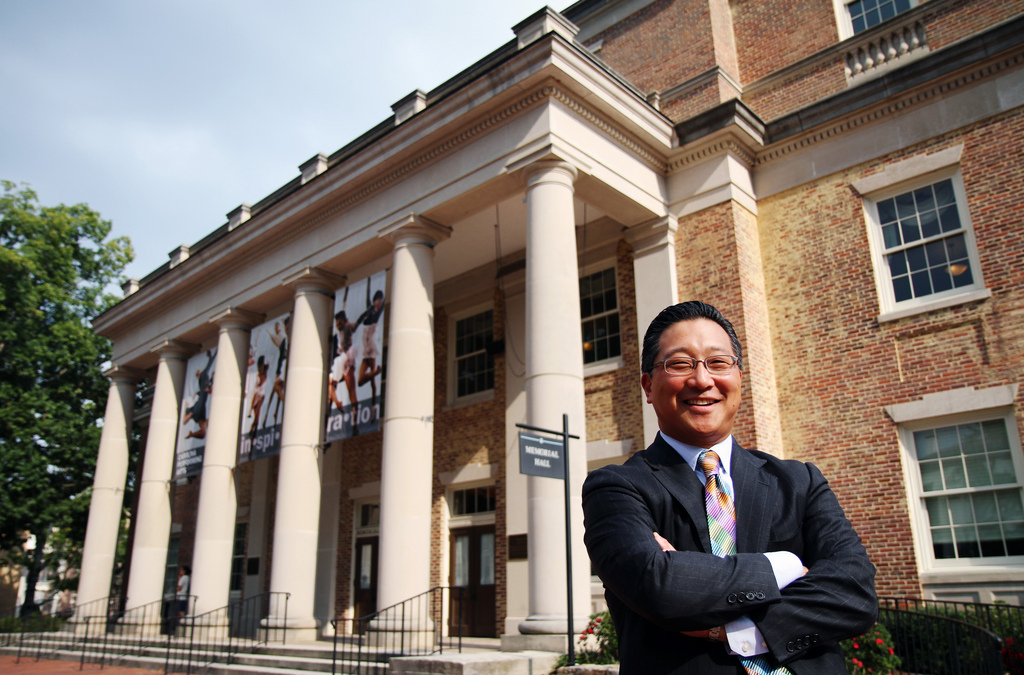
There are few works of modern art and music that are as daunting or influential as Igor Stravinsky’s The Rite of Spring. As we approach the centennial of the ballet’s May 1913 Paris premiere at the Théâtre des Champs-Élysées, Carolina Performing Arts (CPA) and the Institute for the Arts and Humanities (IAH) are reimagining The Rite and its contemporary significance through a year-long celebration, The Rite of Spring at 100. Part of the celebration, which launches this fall, will be a series of once-in-a-lifetime performances at Memorial Hall with some of the leading performing artists of our time, including Yo-Yo Ma and the Silk Road Ensemble, the string quartet Brooklyn Rider, the acclaimed puppeteer Basil Twist, and the Martha Graham Dance Company, to name a few. CPA has commissioned 12 new works to explore, reinterpret and reimagine The Rite. University and local audiences will see them first—each commission will have its world or U.S. premiere right here in Chapel Hill during the 2012-2013 season.
The exploration of The Rite, though, is not confined to Memorial Hall. From the beginning, our vision was to embed the planned performances within the academic and research interests of Carolina faculty. If Memorial Hall is one node of major activity for the upcoming year, then Hyde Hall, the longtime incubator for faculty research and development on our campus, is clearly the other.
With major funding by The Andrew W. Mellon Foundation, CPA joined with IAH to organize a series of academic programs that will expand the celebration to every corner of campus. A highlight will be a series of two academic conferences that will bring together leading thinkers—intellectual historians, music and dance scholars, critics and artists—to reflect on the cultural, political and societal tumult thatThe Rite presaged and in many ways announced. The conferences—the first this October in Chapel Hill and the second in April at the Tchaikovsky Conservatory in Moscow—will assess the long reach of The Rite, the impact and legacy of modernism, and the contemporary social and political dynamics that too often equate, or at least anticipate, violence with creation and innovation.
Richard Taruskin, the New York Times music critic, professor of musicology at UC-Berkeley, and the premier historian of Russian music, will be the keynote speaker for the October conference. He and Lynn Garafola, professor of dance at Barnard College, will both be in residence during the fall conference. Jessica Berman, a modernism scholar and English professor from the University of Maryland, will serve as a distinguished visiting professor at UNC-Chapel Hill during the spring semester.
Three UNC faculty members have been named IAH Faculty Fellows as part of The Rite of Spring at 100: Allen Anderson (Music), Erin Carlston (English), and Hong-An Truong (Art). Each will be provided a one-semester leave to focus on themes related to The Rite in the context of their own research and teaching. A post-doctoral fellow, Jennifer Ware, will be working closely with CPA and IAH on a number of academically-related efforts during the year, including gathering information on the 18 undergraduate and graduate courses this year that will have The Rite as a significant theme or focus.
In these ways and more, Carolina faculty members are a critical constituency for The Rite of Spring at 100. Through the IAH, faculty will be able to engage directly with this extraordinary season of performances and to foster new linkages between the performing arts and their research and teaching responsibilities.
The Rite of Spring at 100, we know, is just the beginning. A new Mellon grant awarded several weeks ago will enable CPA to continue to extend our connections with the academy and deepen our partnership with IAH. It is a happy marriage of shared interests and a common belief in the value of the arts as part of the University’s core mission.
[ Story by Emil J. Kang, Executive Director for the Arts and Professor of the Practice of Music, courtesy of the Institute for the Arts and Humanities newsletter ]




